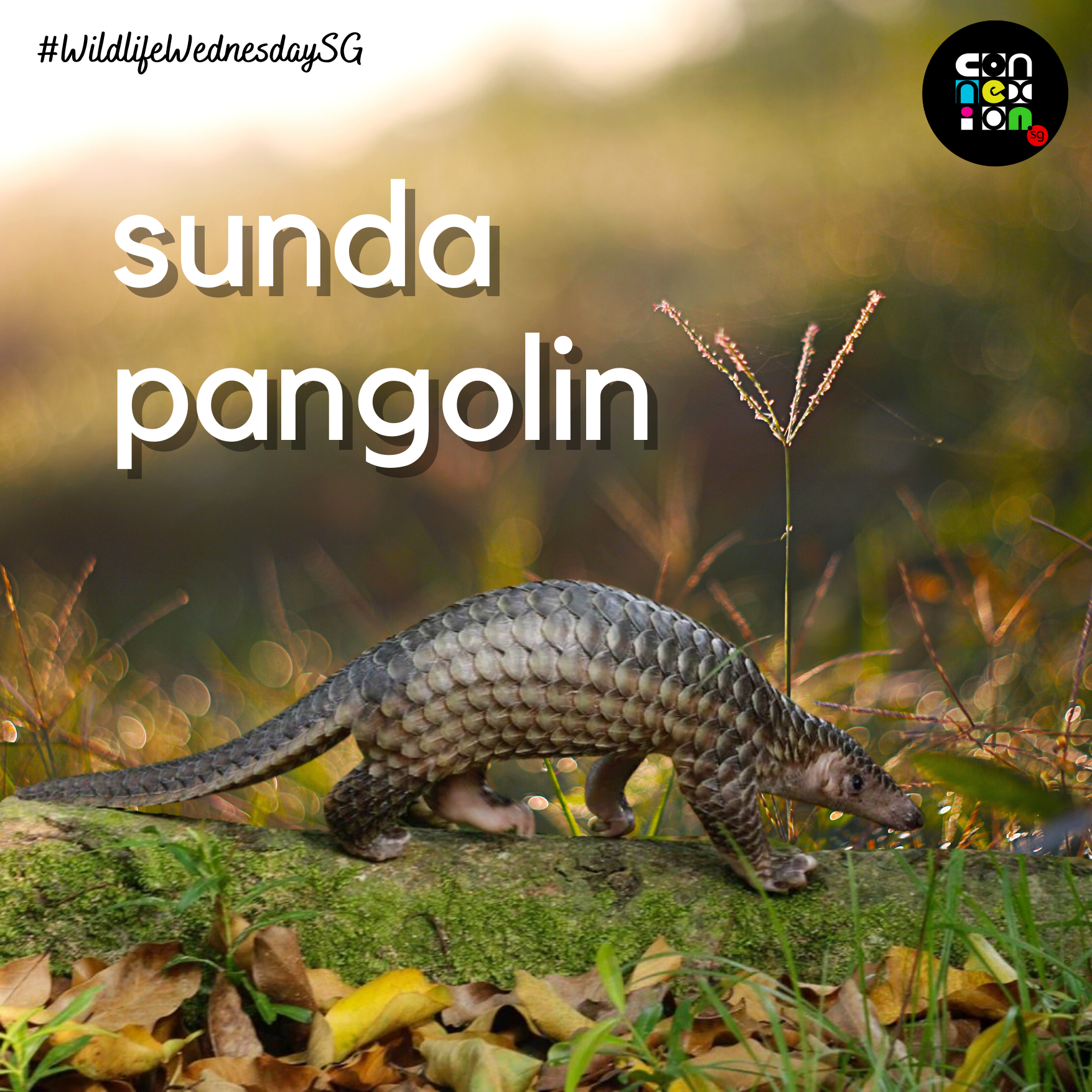Sunda Pangolin

The Sunda pangolin (scientific name: Manis Javanica) is a shy, nocturnal, solitary mammal covered in scales that are made of compressed hair. As pangolins feed on ants and termites, they are sometimes also known as the scaly anteater.
While the Sunda pangolin has no teeth, it has a tongue as long as its entire body. Pangolins feed on ants and termites, using the claws on their forelimbs to break into nests and mounds found in the ground and trees. Once in, they will use their long tongue to gather the insects. One adult pangolin may consume about 70 million insects per year.
Pangolins provide an important ecosystem service by regulating the insect population and protecting forests from termite destruction. Their digging action used when feeding also helps to loosen and aerate the soil, distributing oxygen and essential nutrients in the soil for the benefit of the surrounding biodiversity. When threatened, they curl up into an armoured ball. They may also use their anal glands to produce a foul smell to deter predators.
Critically-endangered Sunda pangolins are native to Singapore. In 2016, NParks (@nparksbuzz) estimated that there are about 100 wild pangolins in Singapore, based on the number rescued and released over the years. They are mainly distributed in the Central Catchment Nature Reserve, Bukit Timah Nature Reserve and the surrounding nature parks. They can also be found in forested areas in the Western Catchment Area, and on the islands of Pulau Ubin and Pulau Tekong.
To ensure Singapore’s pangolins have a healthy future, NParks has been working to better connect forest patches, so they can move around the island to find food and mates, and not get stuck in one place. NParks has also been leaving dead logs from fallen trees in nature parks and nature reserves so pangolins have a ready supply of termites to feast on.
#WildlifeWednesday #WildlifeWednesdaySG #SundaPangolin #ScalyAnteater #ManisJavanica #Mammal #Nature #Singapore #Wildlife

